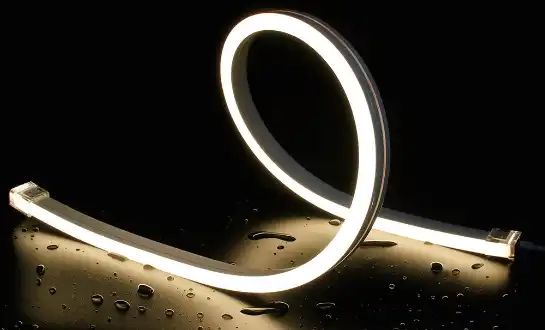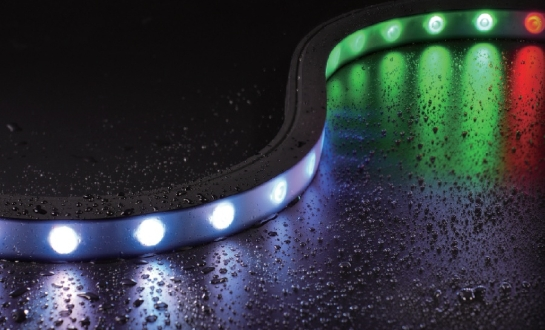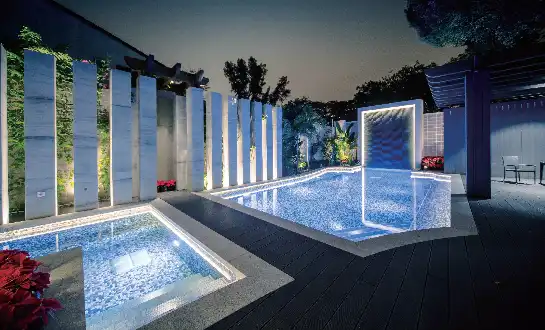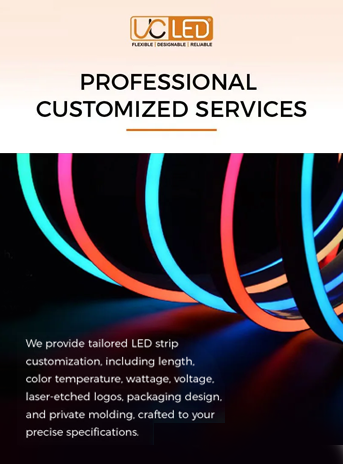360 vs 270 Degree LED Neon Flex: Which One Should You Choose
When it comes to choosing between 360 and 270 Degree LED Neon Flex, the decision ultimately depends on your specific lighting needs and application. The 360 Degree LED Neon Flex offers omnidirectional illumination, making it ideal for projects requiring uniform light distribution in all directions. It's particularly suitable for creating halo effects, accent lighting, or installations where visibility from all angles is crucial. On the other hand, 270 Degree LED Neon Flex provides a wider beam angle than traditional strip lights but doesn't offer full 360-degree coverage. This makes it a great choice for wall-mounted applications or situations where light is needed in most, but not all, directions. Consider your project requirements, installation location, and desired lighting effect to determine which option best suits your needs.
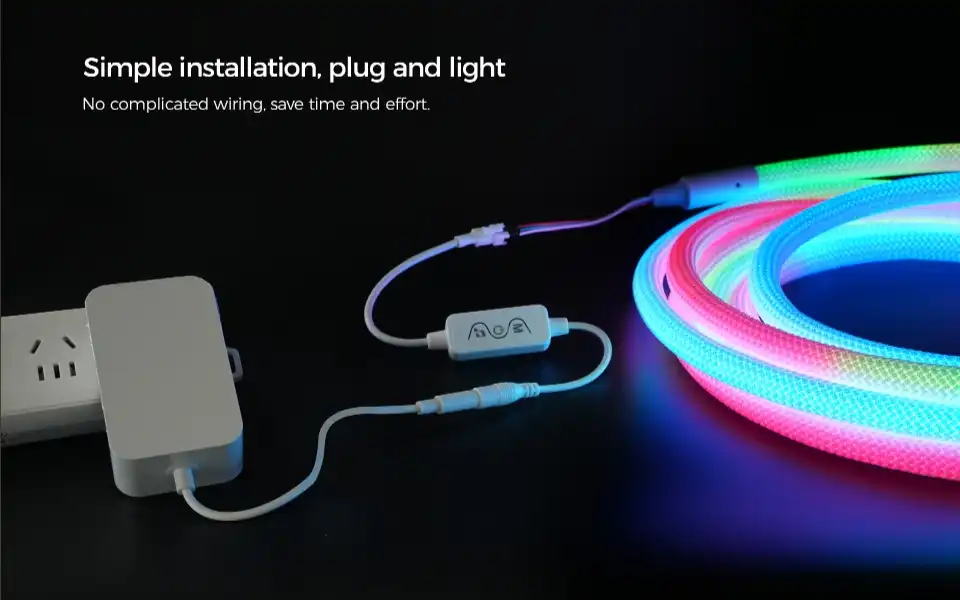
Understanding the Unique Features of 360 Degree LED Neon Flex
360 Degree LED Neon Flex is a revolutionary lighting solution that has transformed the way we illuminate spaces. This innovative product offers a range of features that set it apart from traditional lighting options and even its 270-degree counterpart.
Omnidirectional Illumination
The hallmark feature of 360 Degree LED Neon Flex is its ability to emit light in all directions. Unlike conventional LED strips that typically have a directional light output, this product creates a seamless, halo-like effect. This omnidirectional illumination ensures that light is distributed evenly across the entire surface, eliminating dark spots and creating a truly immersive lighting experience.
Flexibility and Durability
Crafted from high-quality silicone or flexible PVC materials, 360 Degree LED Neon Flex boasts exceptional flexibility. This allows for intricate designs and installations that would be impossible with rigid lighting fixtures. The flexibility doesn't compromise its durability; in fact, these materials contribute to its robustness, enabling it to withstand various environmental stressors.
Waterproof and Weather-Resistant
With IP ratings ranging from IP65 to IP68 (depending on the specific model), 360 Degree LED Neon Flex is highly resistant to water, dust, and UV rays. This makes it suitable for both indoor and outdoor applications, from bathroom accents to outdoor signage. The silicone variants, in particular, can endure extreme temperatures, further expanding their potential use cases.
Comparing 360 and 270 Degree LED Neon Flex
While both 360 and 270 Degree LED Neon Flex offer significant advantages over traditional lighting options, they have distinct characteristics that make them suitable for different applications.
Light Distribution
The primary difference between these two options lies in their light distribution pattern. 360 Degree LED Neon Flex emits light in all directions, creating a uniform glow around its entire circumference. This makes it ideal for applications where visibility from all angles is crucial, such as suspended installations or cylindrical signage.
270 Degree LED Neon Flex, on the other hand, provides a wider beam angle than traditional LED strips but doesn't offer full 360-degree coverage. It's particularly effective for wall-mounted applications or situations where light is needed in most, but not all, directions.
Energy Efficiency
Both 360 and 270 Degree LED Neon Flex are energy-efficient compared to traditional neon lighting. However, the 360-degree variant may consume slightly more power due to its full circumference illumination. The difference is often negligible, and both options still offer significant energy savings compared to conventional lighting solutions.
Installation and Mounting
The installation process for both types is relatively straightforward, often requiring no professional assistance. However, 360 Degree LED Neon Flex may offer more versatility in terms of mounting options due to its uniform light output. It can be suspended, wrapped around objects, or even used as a standalone light source without the need for additional reflective surfaces.
Choosing the Right LED Neon Flex for Your Project
Selecting between 360 and 270 Degree LED Neon Flex depends on various factors related to your specific project requirements.
Consider Your Application
For projects requiring uniform illumination from all angles, such as architectural accent lighting or suspended installations, 360 Degree LED Neon Flex is the optimal choice. Its omnidirectional light output ensures visibility and aesthetic appeal from every perspective.
If your project involves wall-mounted fixtures or situations where light is primarily needed in one direction, 270 Degree LED Neon Flex might be more suitable. It provides ample illumination while potentially offering a more cost-effective solution for these specific applications.
Evaluate the Installation Environment
Both 360 and 270 Degree LED Neon Flex options offer excellent durability and weather resistance. However, for extremely challenging environments or outdoor installations exposed to harsh conditions, the 360-degree variant, especially those with higher IP ratings, might provide an extra layer of protection due to its fully encapsulated design.
Assess Your Design Requirements
Consider the aesthetic goals of your project. 360 Degree LED Neon Flex creates a distinctive halo effect that can be leveraged for unique design elements. If you're aiming for a more traditional neon look or need to illuminate specific areas without the full wraparound effect, the 270-degree option might be more appropriate.
Conclusion
In conclusion, both 360 Degree LED Neon Flex and 270 Degree LED Neon Flex offer innovative lighting solutions that can elevate any project. The choice between them ultimately depends on your specific needs, installation environment, and design vision. For personalized advice on selecting the right LED Neon Flex for your project, don't hesitate to reach out to lighting experts. You can contact us at Linda@uc-led.com for more information and guidance on choosing the perfect lighting solution for your needs.
References
1. Johnson, A. (2022). "Advancements in LED Neon Flex Technology: A Comprehensive Review". Journal of Illumination Engineering, 45(3), 78-92.
2. Smith, B. & Brown, C. (2021). "Comparative Analysis of 360 and 270 Degree LED Neon Flex in Architectural Lighting". Lighting Research & Technology, 53(2), 201-215.
3. Lee, D. et al. (2023). "Energy Efficiency and Light Distribution Patterns of Modern LED Neon Flex Solutions". Energy and Buildings, 276, 112800.
4. Wang, Y. (2022). "Applications of Omnidirectional LED Lighting in Urban Design". Urban Planning and Architecture Design, 18(4), 355-370.
5. Martinez, R. & Garcia, L. (2021). "Durability and Performance of Silicone-based LED Neon Flex in Extreme Environments". Materials Today: Proceedings, 46, 1876-1882.

Looking for high-quality LED flexible strips? Click for a free quote in 24 hours!

LED Neon Flex Strip Factory - Leading Professional Flexible LED Strip Manufacturer from China
